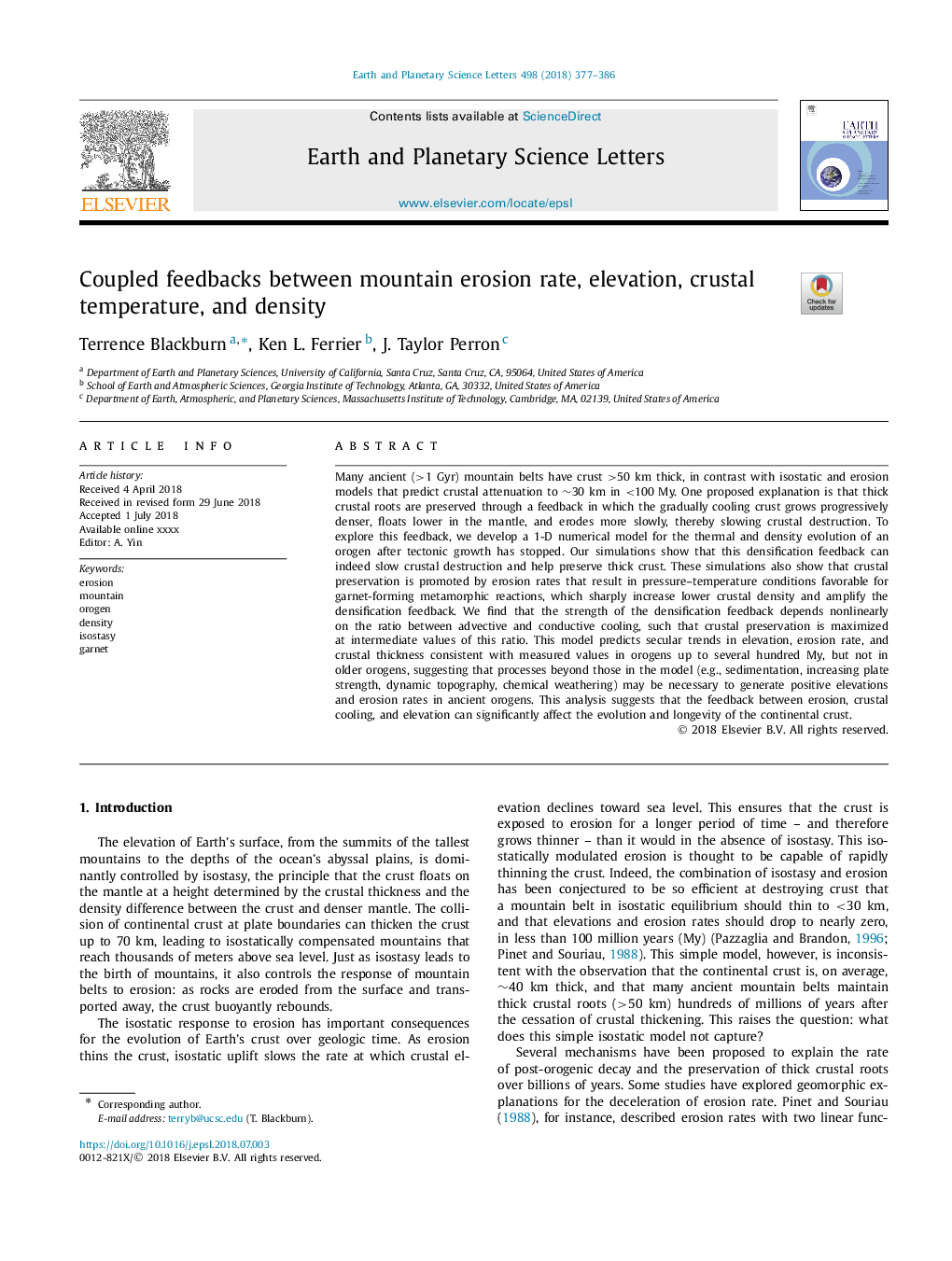| Article ID | Journal | Published Year | Pages | File Type |
|---|---|---|---|---|
| 8906732 | Earth and Planetary Science Letters | 2018 | 10 Pages |
Abstract
Many ancient (>1 Gyr) mountain belts have crust >50 km thick, in contrast with isostatic and erosion models that predict crustal attenuation to â¼30 km in <100 My. One proposed explanation is that thick crustal roots are preserved through a feedback in which the gradually cooling crust grows progressively denser, floats lower in the mantle, and erodes more slowly, thereby slowing crustal destruction. To explore this feedback, we develop a 1-D numerical model for the thermal and density evolution of an orogen after tectonic growth has stopped. Our simulations show that this densification feedback can indeed slow crustal destruction and help preserve thick crust. These simulations also show that crustal preservation is promoted by erosion rates that result in pressure-temperature conditions favorable for garnet-forming metamorphic reactions, which sharply increase lower crustal density and amplify the densification feedback. We find that the strength of the densification feedback depends nonlinearly on the ratio between advective and conductive cooling, such that crustal preservation is maximized at intermediate values of this ratio. This model predicts secular trends in elevation, erosion rate, and crustal thickness consistent with measured values in orogens up to several hundred My, but not in older orogens, suggesting that processes beyond those in the model (e.g., sedimentation, increasing plate strength, dynamic topography, chemical weathering) may be necessary to generate positive elevations and erosion rates in ancient orogens. This analysis suggests that the feedback between erosion, crustal cooling, and elevation can significantly affect the evolution and longevity of the continental crust.
Related Topics
Physical Sciences and Engineering
Earth and Planetary Sciences
Earth and Planetary Sciences (General)
Authors
Terrence Blackburn, Ken L. Ferrier, J. Taylor Perron,
